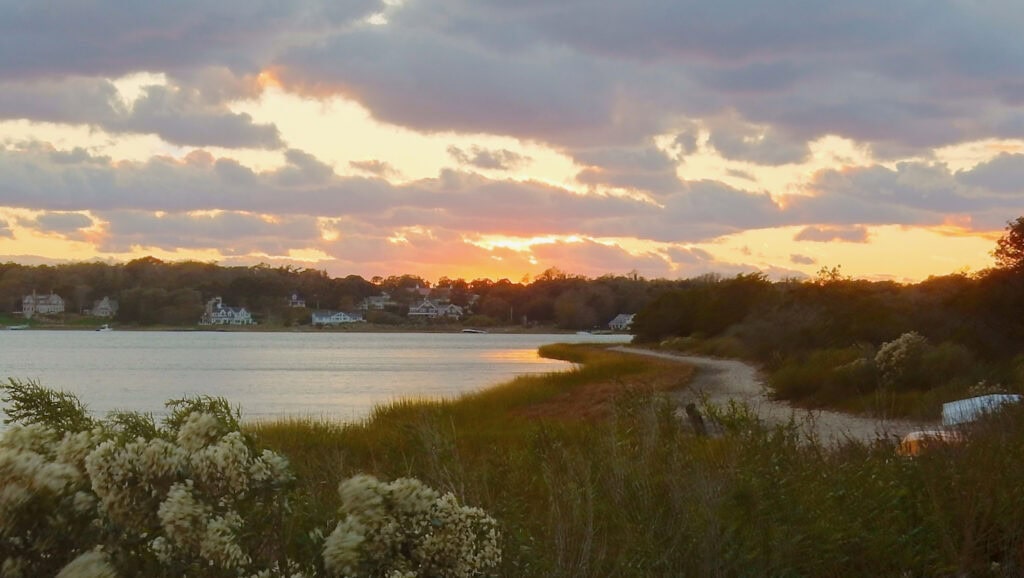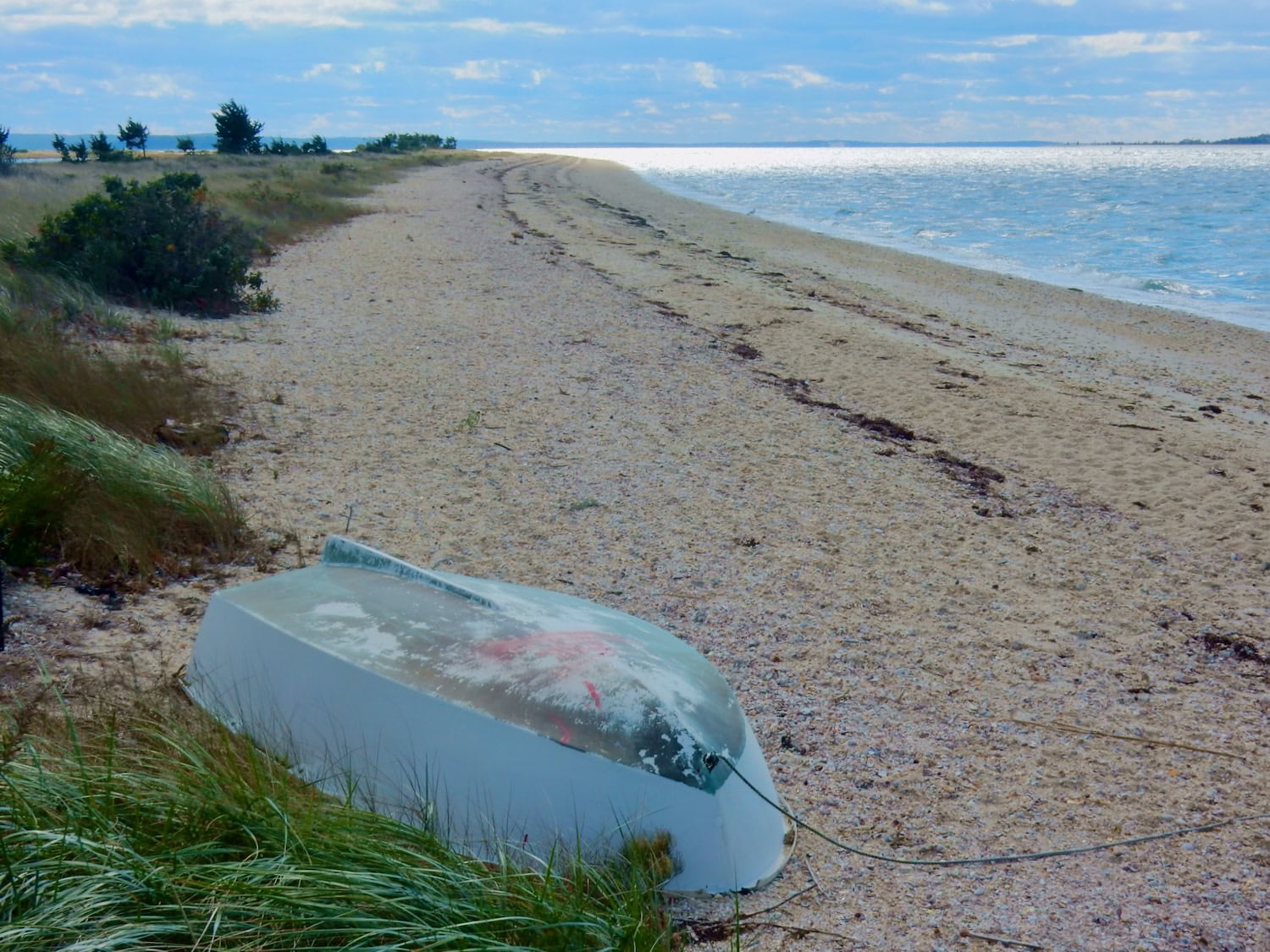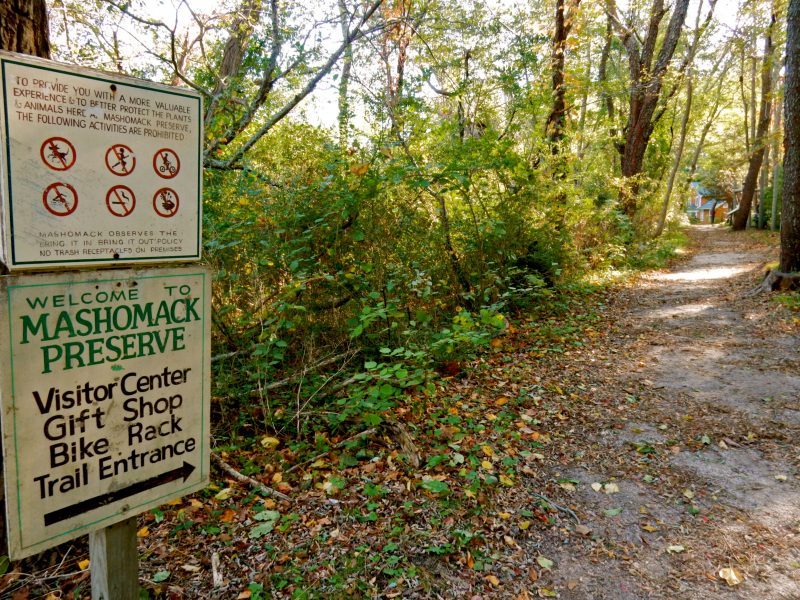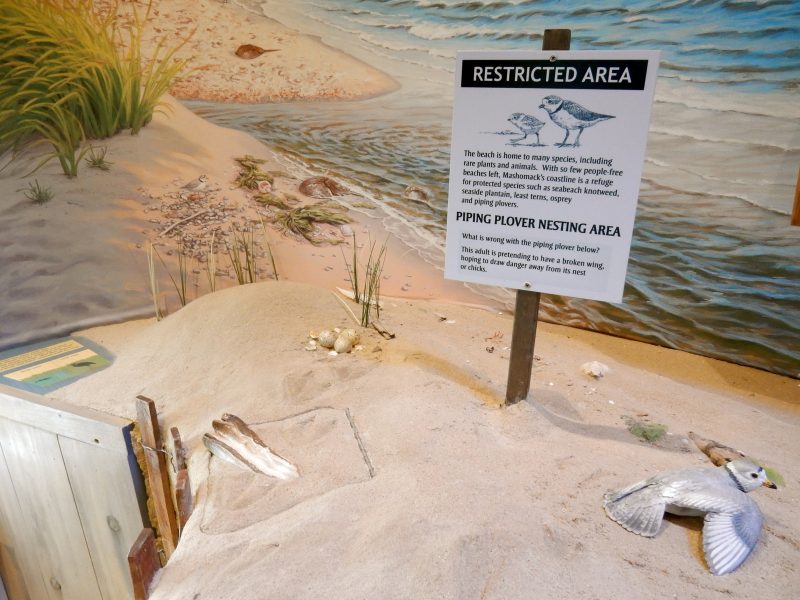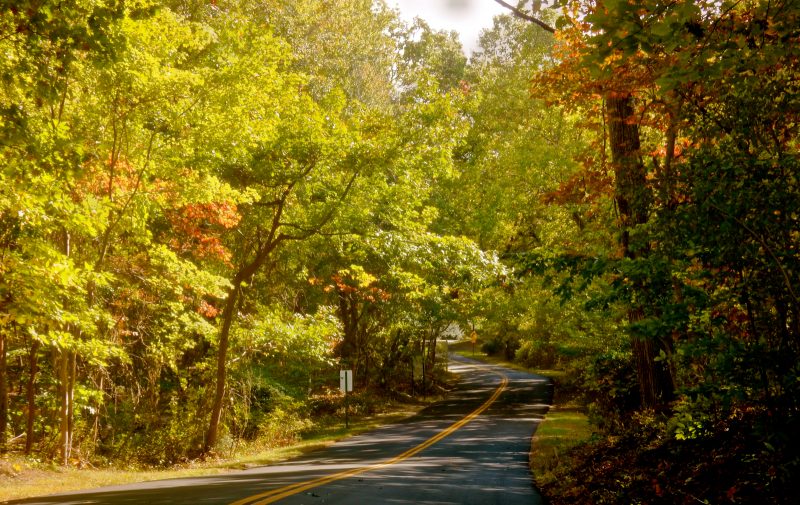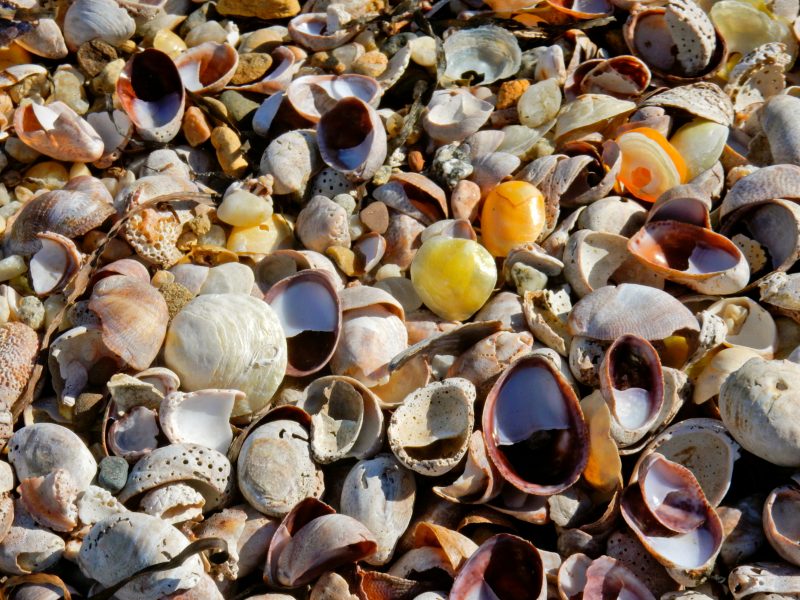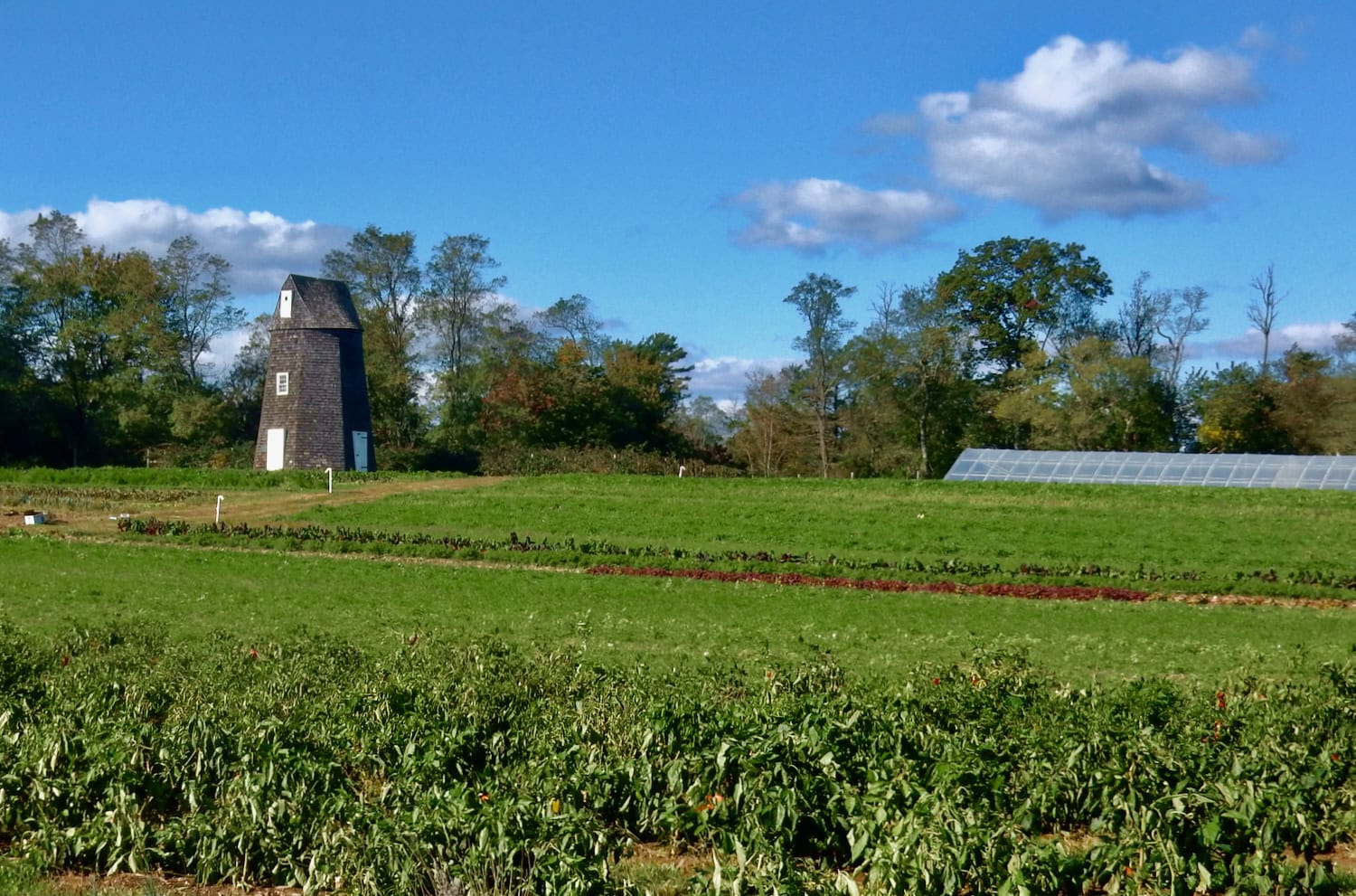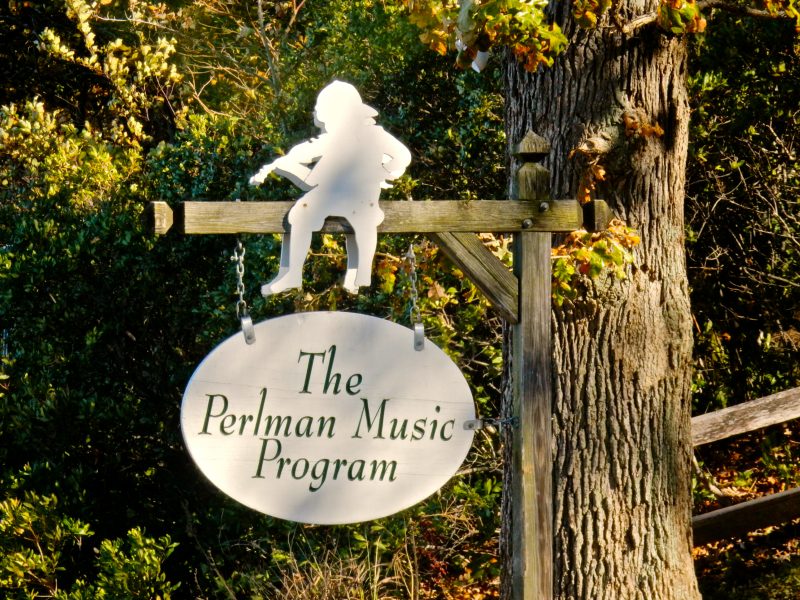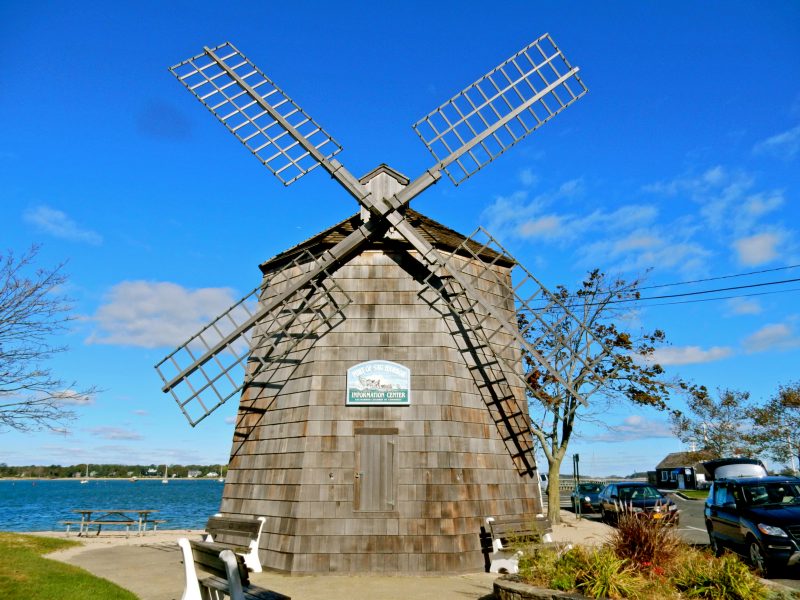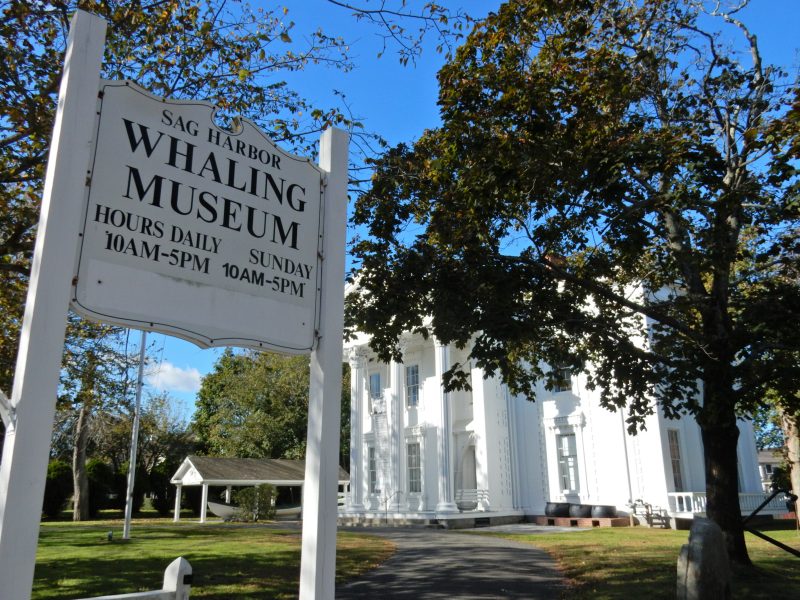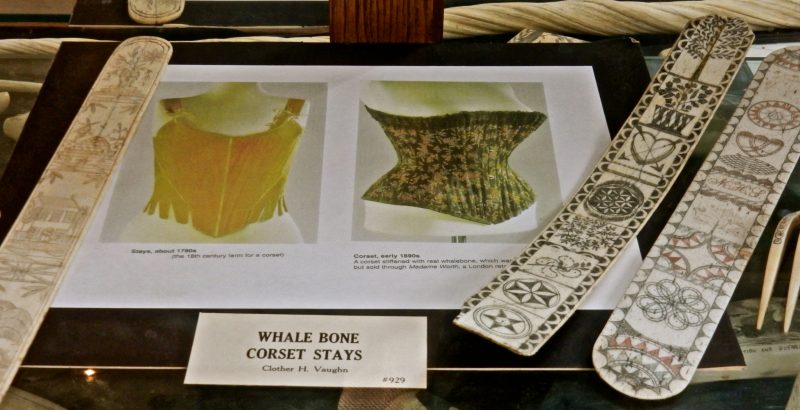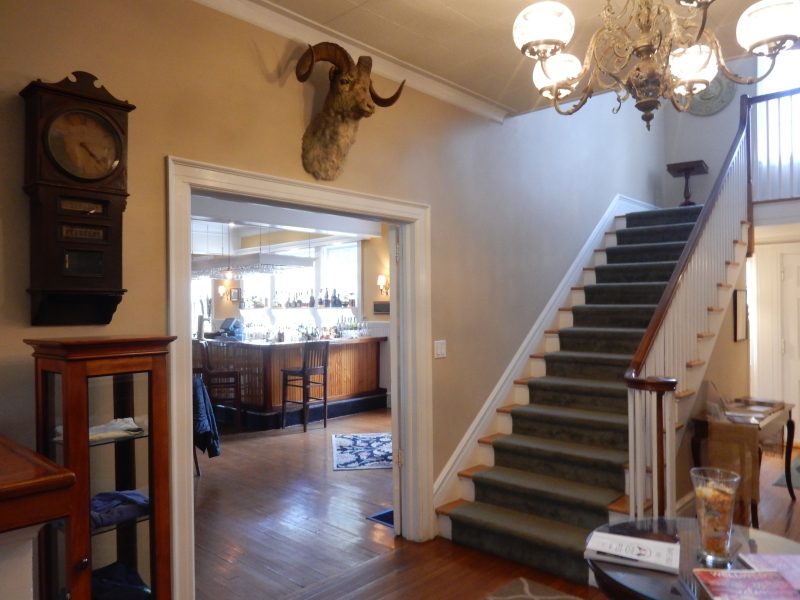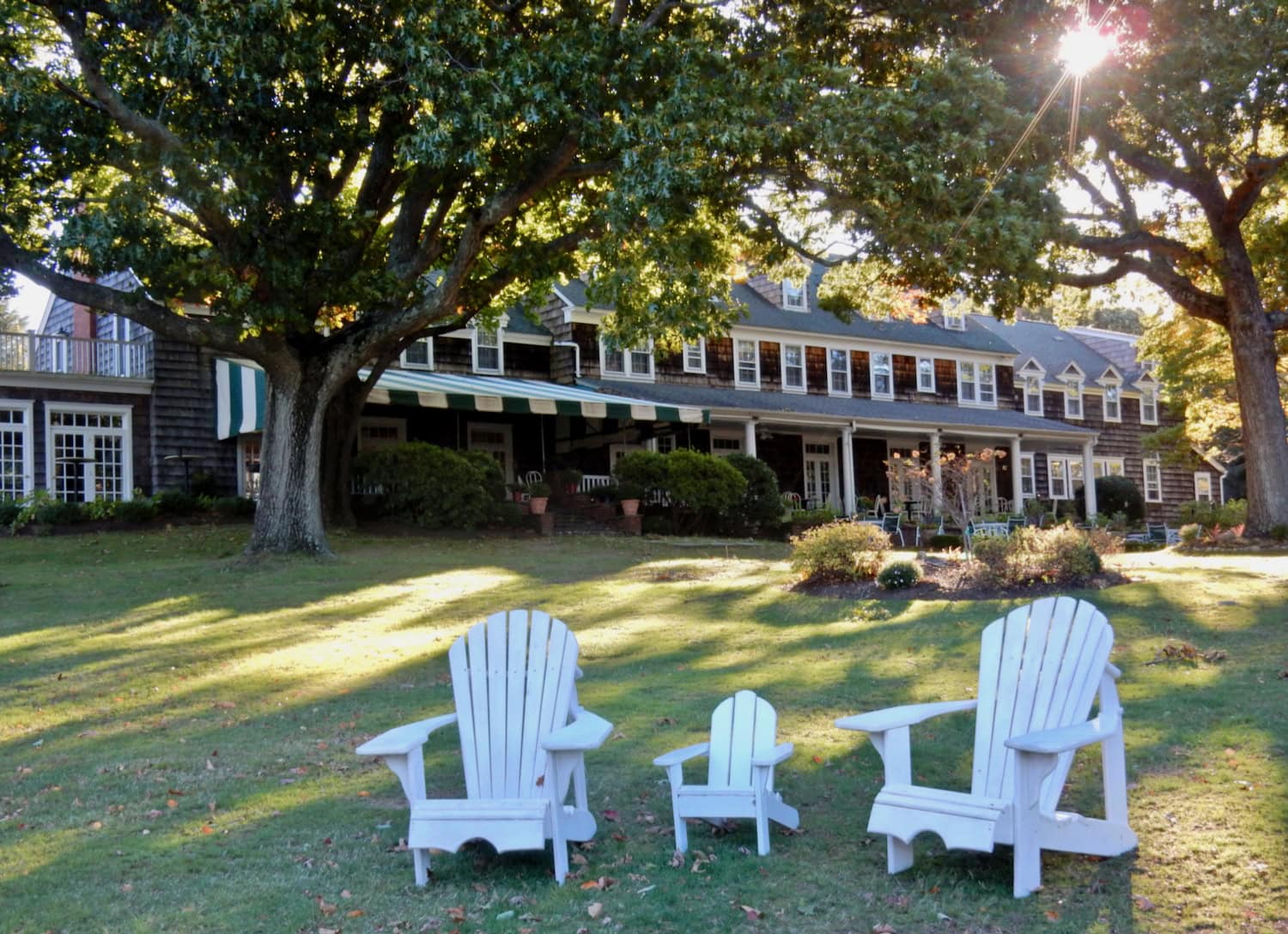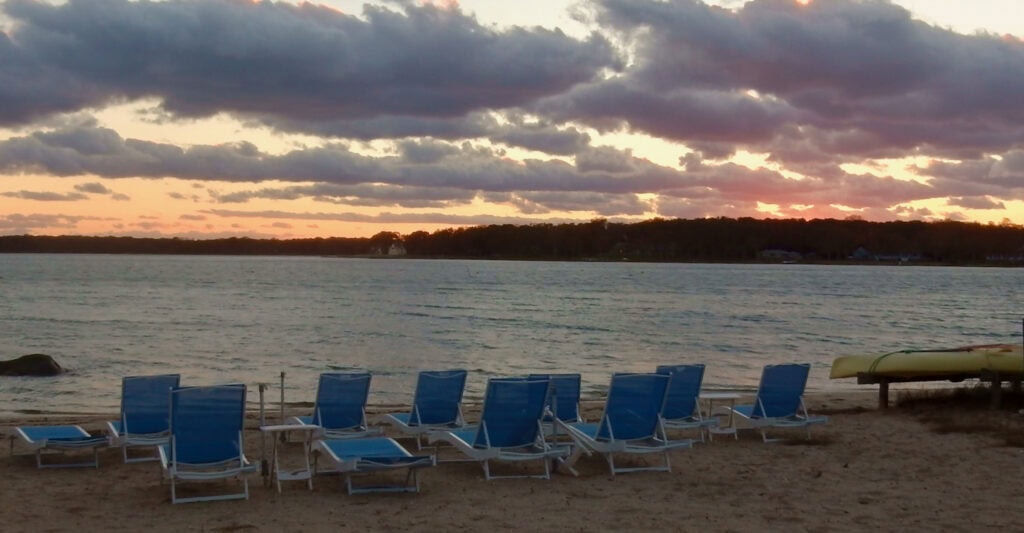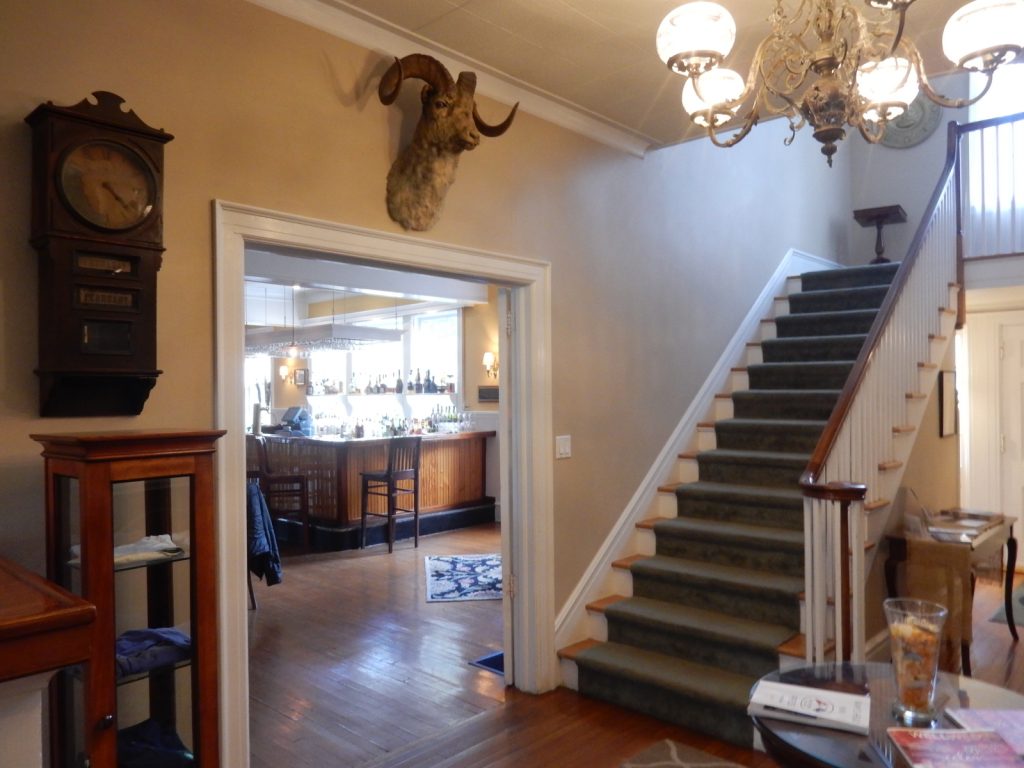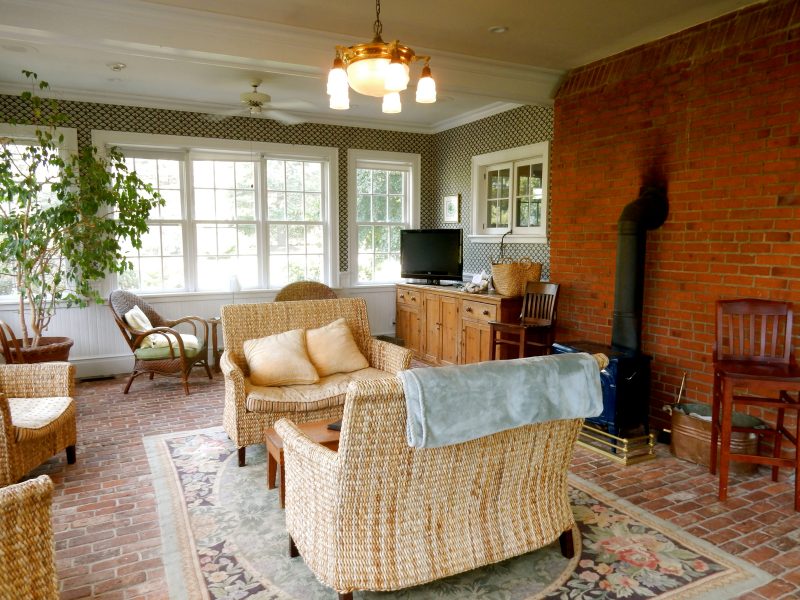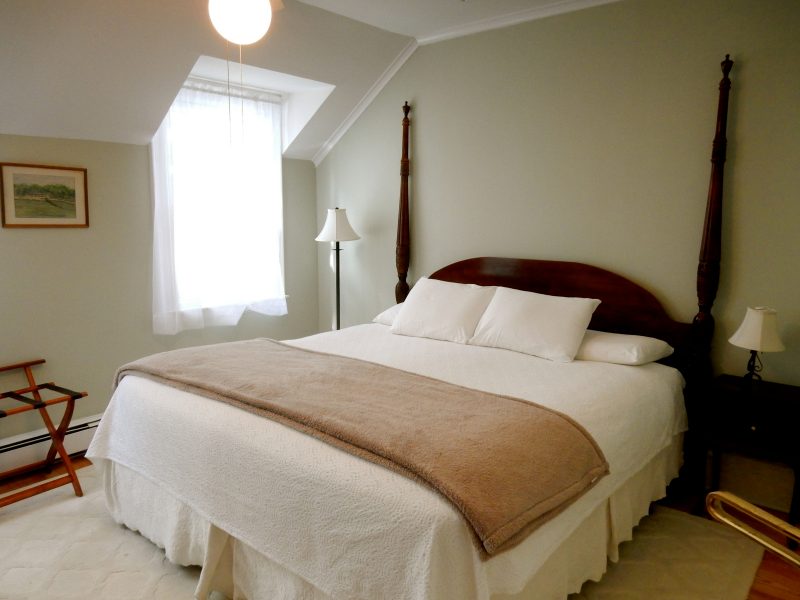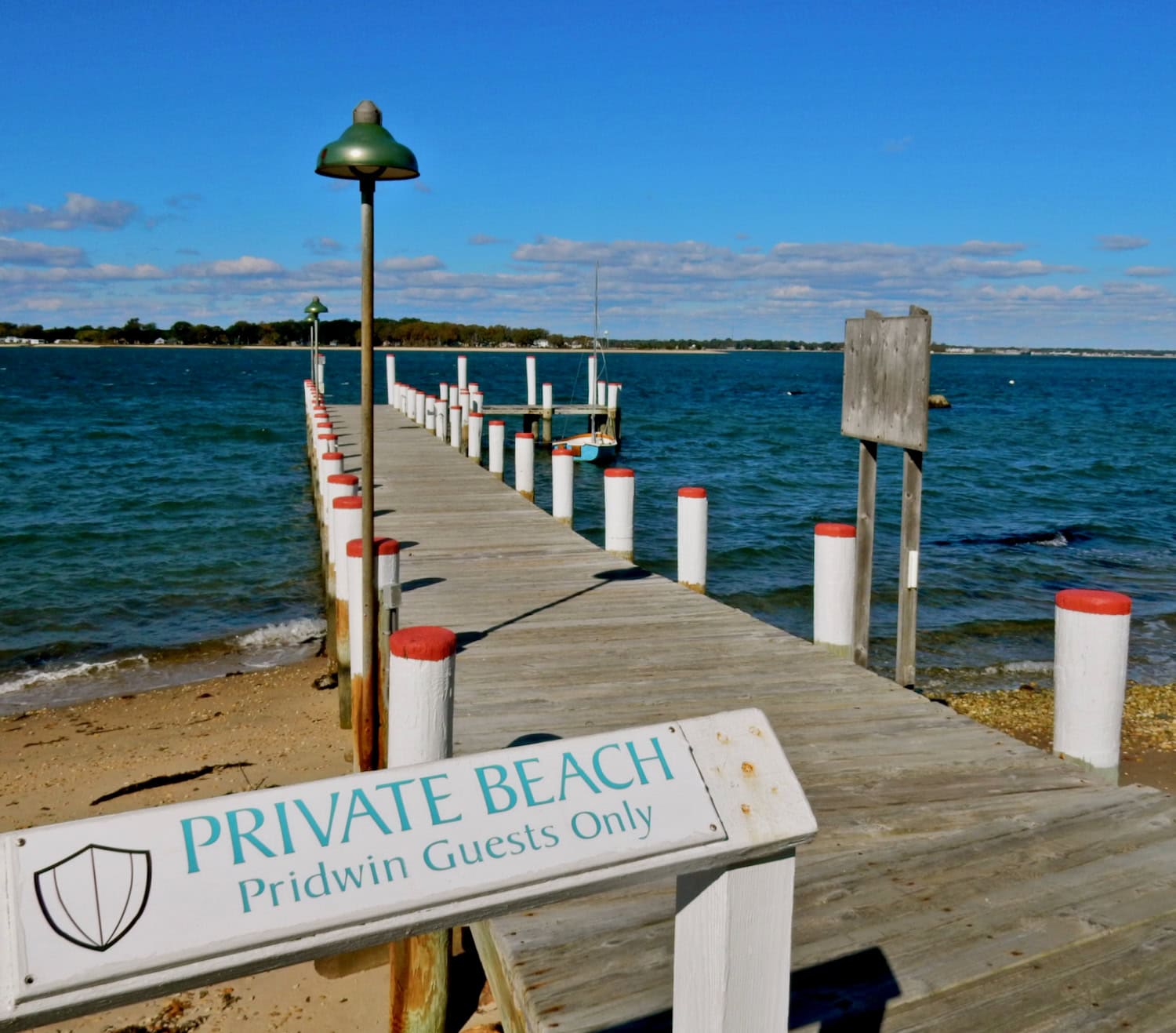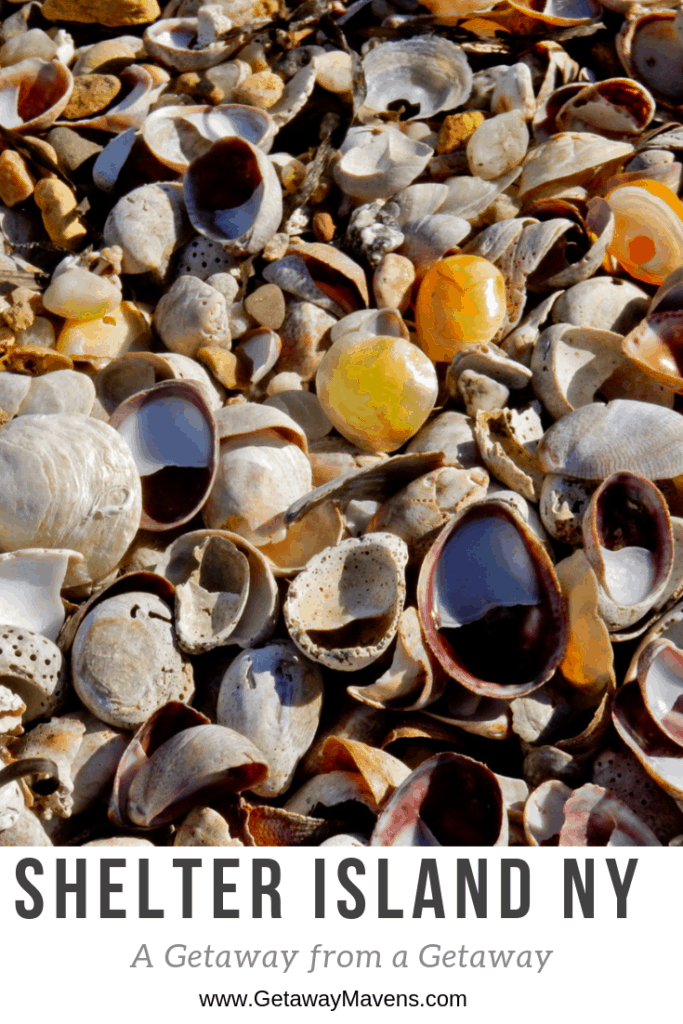WHY GO: Yes, we are going to tell you all about the best, and most romantic things to do on Shelter Island NY.
But first: Where is Shelter Island?
Picture the two prongs of land at the Eastern end of Long Island NY in the shape of a V. The Peconic Bay separates one prong, the North Fork (wineries), from the other prong, The South Fork (Hamptons). Shelter Island sits in the space in between: in Peconic Bay.
(For more couples escapes in New York State, check out our Best Romantic Getaways in NY post).
Shelter Island doesn’t have any shouty ad campaigns. If you’re hoping to bump into a celebrity, look elsewhere. This island is a spotlight-free zone, except for the discreet Itzhak Perlman Music Program, which brings young music prodigies here in the summer months.
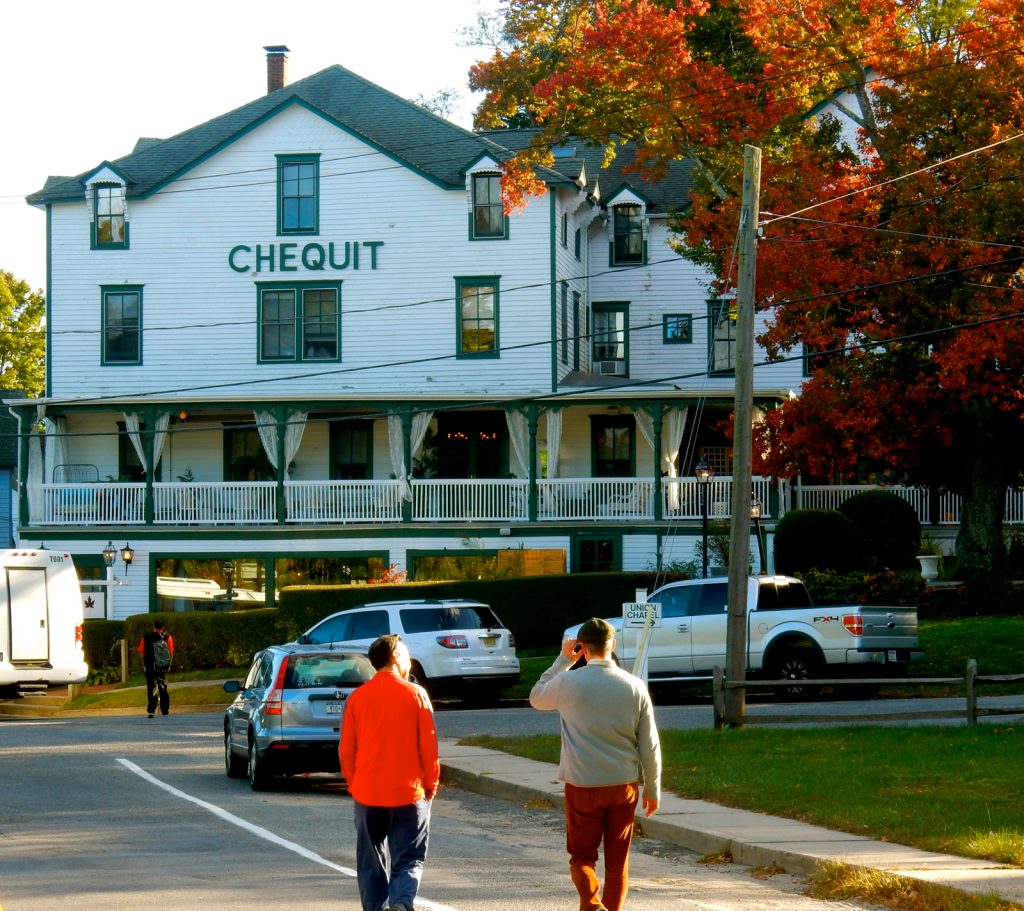
But, if you aim to get away from it all, walk in the woods, bike beautiful tree-canopied winding roads, collect shells, and decompress, stay here. Especially during off season in September and October when the crowds have left, and you can have the beaches to yourselves.
There’s a wonderful nature preserve, several good restaurants, and a smattering of hotels and inns – mostly sedate (but one drawing a Hampton’s – style crowd). Where to go/what to do on this little island? Read on.
How do you get to Shelter Island?
Shelter Island is accessible only via 10-minute car ferries from either Sag Harbor NY or Greenport, NY. Shelter Island is, in effect, a getaway from a getaway.
To/From Greenport NY (North Ferry)
The North Ferry gets you from Greenport to Shelter Island from the North Fork of Long Island ($15 one way, $24 round trip as of 2025).
To/From North Haven/Sag Harbor NY (South Ferry)
The South Ferry runs from North Haven NY (a few miles from Sag Harbor: $15 each way, $20 round trip).
Things to Do on Shelter Island (with stop in Sag Harbor NY)
VISIT/WALK: Mashomack Preserve
Taking up a nearly a third of Shelter Island, the 2,029-acre Mashomack Preserve – a Nature Conservancy Wildlife Refuge – is one of the best run and locally treasured preserves in the region. Though busiest in the summer season, there are programs here throughout the year.
Start in an interactive Visitor’s Center, with humble “please touch” exhibits that highlight forest, meadow, freshwater wetlands, salt marsh and shoreline habitats. You can’t miss the somewhat macabre heads of two deer who died locked in horns.
There are five well-marked trails of various lengths. With 12 miles of shoreline, 45 small ponds and 7 salt marshes, there’s plenty to do and see here. Better yet, each trail has its own unique aspects.
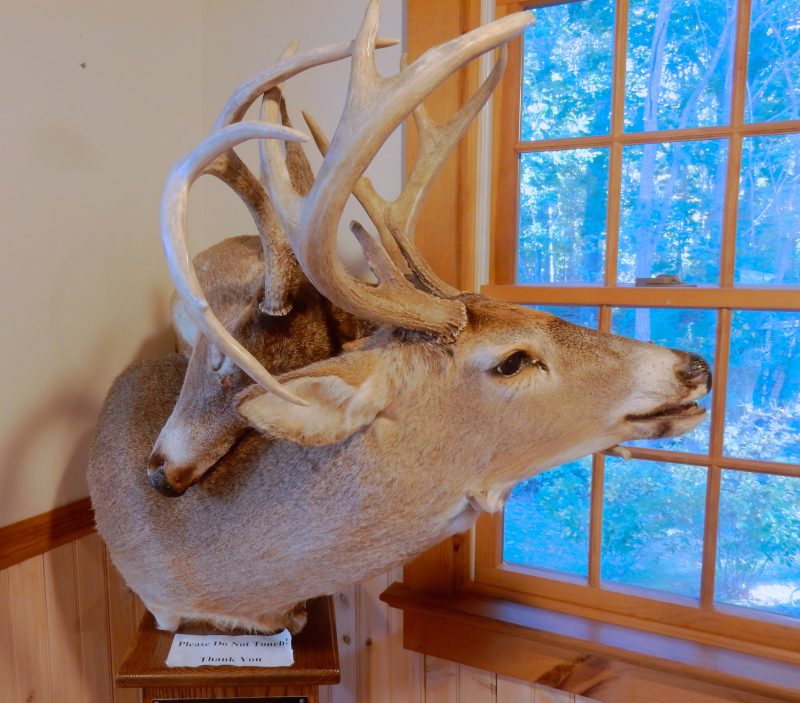
Love Bluebirds? Hike the 3-mile open-meadow Yellow Trail to see lots of them. The 6-mile Green trail is the most diverse and most popular, with woods, meadows, and three salt marshes, that leads to a bluff with water views. Lastly, you can spend hours on the 10-mile Blue Trail with views of Gardiner’s Bay.
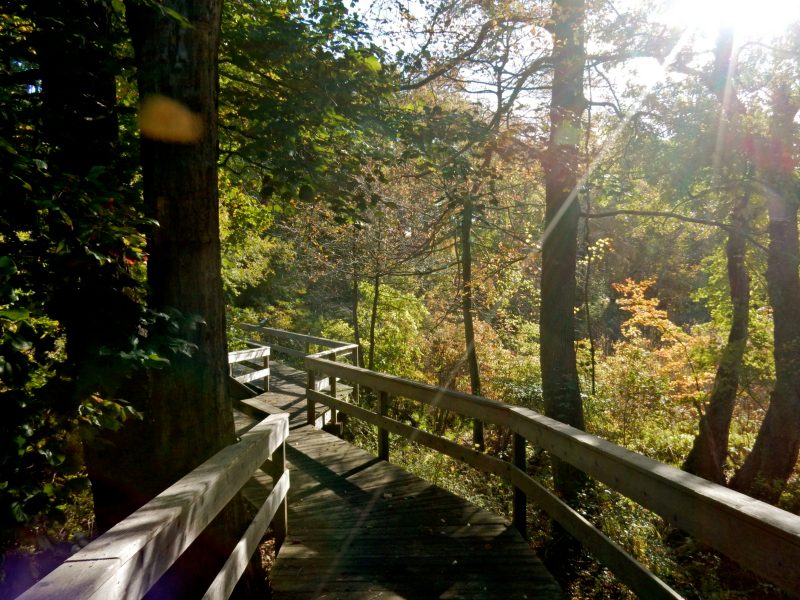
BIKE: All Over Shelter Island
In season, it will be impossible to find parking anywhere near beaches. So, of course, bikes come in handy. Off season, in late Sept/early Oct., winding roads are almost empty, and the views lovely. Go ahead, explore. Most of the island is residential. If you didn’t bring your own bikes, rent some from Piccozzi’s Bike Shop on Ferry Rd.
GO: Stern Preserve at Reel Point
You’ll be in shell nirvana at the 8-acre Reel Point Preserve at the very end of Big Ram Island. Though you’d have to grow an exoskeleton to be comfy sprawling out to catch some rays, the crunchy, sharp-edged beach is the perfect place to find a high concentration of “Mermaid’s Toes,” clams, cockles, scallops, and other beautiful shells.
VISIT: Sylvester Manor
Sylvester Manor was established in 1652 as a provisioning plantation for the Barbadian sugar trade. It’s been in the same family since then. The 243-acre former plantation encompasses farm fields, wet and wood lands, formal gardens and grass lawns, numerous barns and buildings, and the Manor house.
Though the 1700’s home is not open to the public on a daily basis, you are welcome to wander the beautiful grounds and pick up organic meats and produce at the Farmstand.
Eleventh generation estate owner, Bennett Konesni, the founder of Sylvester Manor Educational Farms, envisions bringing the culture back to agriculture. His mission is to preserve, cultivate and share historic Sylvester Manor to ensure that food and art remain connected to community and the land, Check website for schedule of events.
LISTEN: Perlman Music Program
In summer, catch a free “works in progress” concert presented by gifted musicians ages 12-18 at the Perlman Music Program’s Summer Music School. Established by Toby Perlman, wife of violin virtuoso, Itzhak Perlman, in 2000, PMP’s bucolic setting allows young talent to connect with others and florish together in peace. Check website for events.
WALK: Sag Harbor Self-Guided Walking Tour
The town of Sag Harbor is on the “Hamptons” fork (South) of Long Island. And, like the Hamptons, it has a tinge more swank than Shelter Island. A Customs Port post-US Revolutionary War (one of two in New York – the other in Manhattan) with a railroad station, it was a rough and tumble, ethnically varied, busy end-of-land town.
Whaling brought a diverse workforce, and thus a diverse citizenry, to Sag Harbor. When whaling declined in the mid 1800’s, light industry – most notably the Bulova Watchcase Factory – moved in. (Bulova closed in 1980).
Sag Harbor offers over a dozen walking tours with a variety of themes. Choose one or more that calls to you.
 VISIT: Sag Harbor Whaling and Historical Museum
VISIT: Sag Harbor Whaling and Historical Museum
On the Peconic Bay side of the South Fork, Sag Harbor was safe haven for whaling ships coming in from the often-dangerous Atlantic Ocean. The Sag Harbor Whaling and Historical Museum building itself, designed in 1845 by a starchitect of the day, Minard Lafever, is a stunning classic Greek Temple-front mansion.
Galleries on one floor showcase scrimshaw, portraits of whaling captains, harpoons and whaling curiosities galore. My favorites – decorated women’s corset whalebone stays. Check seasonal hours and dates, and admission costs.
Restaurants on Shelter Island
EAT: Ram’s Head Inn
Food is fine, service is great and ambience stunning at the Ram’s Head Inn. In warm season, ask to sit on the patio perched over a lawn that slopes down to a gazebo, tennis courts, a small beach and bay beyond. Drink in the sunset with your wine and feel one with nature.
EAT: Locals Also Love
Vine Street Cafe and 18-Bay Restaurant for special occasion fine dining. Kyle’s for breakfast and baked goods. Marie Eifel Market for great sandwiches. And Maria’s Kitchen for authentic, casual Mexican food.
Where to Stay on Shelter Island
STAY: Ram’s Head Inn
The Rams Head Inn sits on a bulb of land separated from the rest of Shelter Island by a couple of narrow causeways. Prescient Real Estate agent, Joan Covey, built the inn as a resort in 1929.
At the start of the Great Depression, Covey enticed her Real Estate clientele in Great Neck, Long Island, to enjoy an island getaway for low cost; just a short drive from home. Although the inn has cycled through several owners and permutations, it still honors Covey’s original intent.
In 1979, Linda and James Eklund purchased the property, fixed it up and kept it up until it changed hands once again in 2023, when current owner, Aandrea Carter, fell in love with the property at first sight.
First Impressions of Rams Head Inn
If ever you yearn for a lost-in-time shore experience, this place delivers.
A rambling, antique resort on an island (Big Ram Island) on an island (Shelter Island) on another island (Long Island), it takes a concerted effort to get to. But the property is so exquisite, you might not want to leave.
The lawn, peppered with white Adirondack chairs slopes down to a tiny cove beach from which you can kayak and swim in calm warm water. There’s a gazebo, a bocce court, corn-hole boards and tennis courts as well. In fact, you’ll find everything you’d need for a relaxing afternoon or two away from civilization.
The lobby is cozy and welcoming, with friendly staff, who will either take you right to your room or point you towards the popular bar. The comfy sunroom has the only television on site.
It’s easy, breezy, and with a stellar restaurant on the main floor, a self-contained resort. You never have to leave. Indeed, people come here just to read, reconnect, enjoy a good bottle of wine, and catch up on sleep.
Rooms at Rams Head Inn
Most of the 17 rooms are small but charming and bright. Beds sport white coverlets, furnishings include several antique pieces, and shear curtains allow in a good amount of sunlight.
Dining (See Above Under Where to Eat)
Rams Head Inn Amenities
Use of small sailboats, kayaks and SUP’s, as well as hammocks and chaise lounges are available, complimentary, to guests at the 800 ft. beach.
Regulation-sized Bocce Court
Tennis Court
Wi-Fi
Full Bar
Private Dock for guests who come by boat located at the causeway.
STAY: More Shelter Island Inns
There are several other worthwhile hotels on the island including the renovated Chequit Inn, located in the “Heights;” Seven on Shelter Island – a modern-luxe “Boutique B&B;” the newly updated Pridwin Hotel on the waterfront with its own private dock; and the Sunset Beach Hotel right on Crescent Beach – as close to a Hampton’s scene as you’ll to find on Shelter Island.

